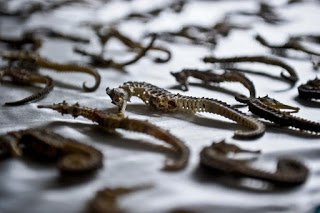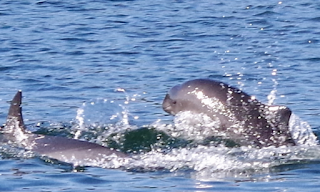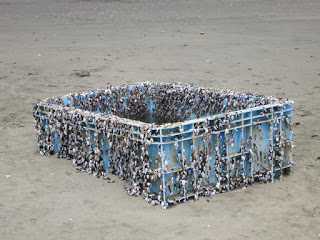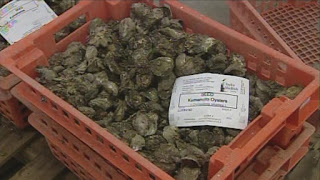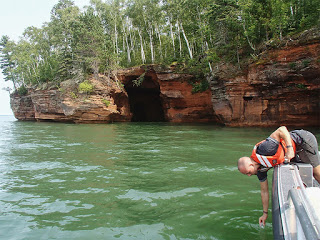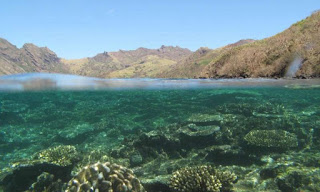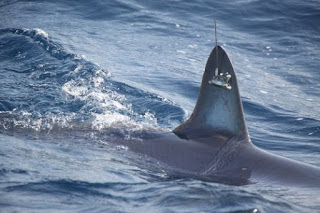Sea Save Foundation “Ocean Week in Review” August 31, 2018: We Gather News; You Stay Informed
1. Hundreds of Endangered Sea Turtles Found Dead Off Mexico
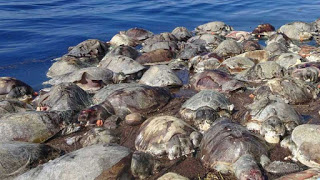 On Tuesday, Mexico’s federal agency for environmental protection announced that more than 300 olive ridley sea turtles had died after apparently becoming entangled in a fishing net. The animals were found floating together off the coast of the southern state of Oaxaca, their shells cracked from more than a week of drying in the sun. The news comes just days after another 113 sea turtles, most of which were also olive ridleys, washed ashore in Mexico’s Chiapas state approximately 100 miles to the east. It’s unclear in this latter case what killed the turtles, but some bore injuries consistent with those caused by hooks and nets.
On Tuesday, Mexico’s federal agency for environmental protection announced that more than 300 olive ridley sea turtles had died after apparently becoming entangled in a fishing net. The animals were found floating together off the coast of the southern state of Oaxaca, their shells cracked from more than a week of drying in the sun. The news comes just days after another 113 sea turtles, most of which were also olive ridleys, washed ashore in Mexico’s Chiapas state approximately 100 miles to the east. It’s unclear in this latter case what killed the turtles, but some bore injuries consistent with those caused by hooks and nets.
———————————————–
2. New Way to Save Endangered Sharks – and Our Seafood
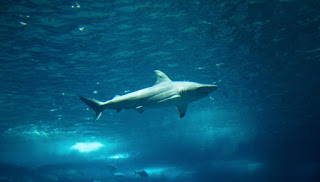 By using a genetic tool called DNA barcoding, Brazilian researchers could help prevent illegal fishing of threatened shark species and hence help prevent the collapse of some fisheries. This is important because sharks are top predators that keep the marine ecosystem in check, helping to sustain the food web that supports millions of people worldwide who rely on seafood sustenance. Although shark fishing is banned in Brazil, the clandestine market continues, driven partly by the high prices shark fins bring: up to US $1,000 per kilogram on the international market.
By using a genetic tool called DNA barcoding, Brazilian researchers could help prevent illegal fishing of threatened shark species and hence help prevent the collapse of some fisheries. This is important because sharks are top predators that keep the marine ecosystem in check, helping to sustain the food web that supports millions of people worldwide who rely on seafood sustenance. Although shark fishing is banned in Brazil, the clandestine market continues, driven partly by the high prices shark fins bring: up to US $1,000 per kilogram on the international market.
———————————————–
3. Dried Seahorses Seized—All Eight Million
Four years ago Peruvian authorities seized 16,000 dried seahorses abandoned on a street near an airport in Lima, the nation’s capital. If you think that sounds like a whole lot of fish, think again. This time they confiscated eight million of the little creatures at the Port of Callao in Lima—the nation’s largest seahorse haul. Discovered on June 7, the seahorses were on a Chinese-flagged ship bound for Asia, according to China NewsAsia, which cited a government statement. Authorities arrested the captain in connection with smuggling the goods, worth nearly $4 million on the black market.
———————————————–
4. Florida’s ‘Red Tide’ Linked to 2,000 Tons of Dead Marine Life; State of Emergency Issued
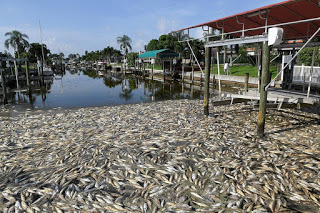 Five counties in Florida remain at the mercy of the weather and water currents as a “red tide” algae bloom continues to choke their waters, marine life and economies. Red tide has spread to roughly 130 miles of coastline in Florida’s Manatee, Collier, Lee, Charlotte and Sarasota counties. When algae blooms and then dies, it releases toxins that can kill marine life. Red tides are amorphous and can be steered by wind and water currents. One day, with the winds blowing off-shore, only a few dead fish may wash onto beaches. The next could be a bad day with red tide staining the crashing waves, littering white sands with dead fish and other marine life.
Five counties in Florida remain at the mercy of the weather and water currents as a “red tide” algae bloom continues to choke their waters, marine life and economies. Red tide has spread to roughly 130 miles of coastline in Florida’s Manatee, Collier, Lee, Charlotte and Sarasota counties. When algae blooms and then dies, it releases toxins that can kill marine life. Red tides are amorphous and can be steered by wind and water currents. One day, with the winds blowing off-shore, only a few dead fish may wash onto beaches. The next could be a bad day with red tide staining the crashing waves, littering white sands with dead fish and other marine life.
———————————————–
5. Solitary Dolphin Clicks with Porpoise Companions in the Clyde
A dolphin which has lived alone in the Firth of Clyde for at least 17 years appears to have found company in local harbor porpoises. The short-beaked common dolphin, nicknamed Kylie by local people, has made his home around a navigational buoy between Fairlie and Cumbrae, likely after getting lost from his group. The Firth of Clyde is not commonly visited by dolphins of this species and so the solitary cetacean has mostly been exposed to sounds produced by other species, especially the harbor porpoise.
———————————————–
6. Scientists Discover Giant Deep-Sea Coral Reef Off Atlantic Coast
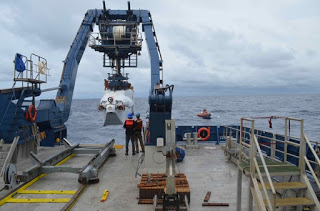 As the research vessel Atlantis made its way out to sea from Woods Hole, Massachusetts, last week, expedition chief scientist Erik Cordes predicted the team would discover something no one has ever seen before. It didn’t take long. Some 160 miles off the coast of Charleston, South Carolina, a half mile below the ocean surface, is a dense forest of cold water corals. And based on their observations and recent sonar mapping of the ocean floor, researchers estimate that the reef runs for at least 85 linear miles.
As the research vessel Atlantis made its way out to sea from Woods Hole, Massachusetts, last week, expedition chief scientist Erik Cordes predicted the team would discover something no one has ever seen before. It didn’t take long. Some 160 miles off the coast of Charleston, South Carolina, a half mile below the ocean surface, is a dense forest of cold water corals. And based on their observations and recent sonar mapping of the ocean floor, researchers estimate that the reef runs for at least 85 linear miles.
———————————————–
7. Invasive Species Are Riding on Plastic Across the Oceans
We know plastics are as plentiful in parts of the open ocean as they are in our everyday lives. But, until recently, scientists didn’t consider that such debris could also be carrying a new wave of invasive species to the shores of the United States. Now they’re finding that not only is that happening, but they suspect that some of the species will thrive. Not long after the 2011 earthquake and tsunami that ravaged the east coast of Japan, a surge of floating trash—shellfish cages, portions of piers, entire fishing vessels—started washing onto the West Coast of North America and Hawaii
———————————————–
8. What Happens to Plastic in the Oceans?
The concentrations of microplastics in the surface layer of the oceans are lower than expected. Researchers at the GEOMAR Helmholtz Centre for Ocean Research Kiel, the Kiel Cluster of Excellence “The Future Ocean” and the Helmholtz-Zentrum Geesthacht experimentally demonstrated that microplastics interact with natural particles and form aggregates in seawater. This aggregate formation could explain how microplastics sink into deeper water layers. The oceans contain large numbers of particles of biological origin, including, for example, living and dead plankton organisms and their fecal material.
———————————————–
9. Ocean Heatwaves Have Doubled In Frequency Over The Past 35 Years
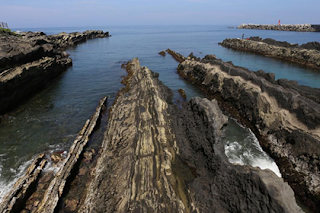 The past three years rank among the five hottest years on record and California just experienced its warmest July on record. However, if it wasn’t for the oceans, our planet would be warmer than the extra 1°C that it is today. In fact, the world’s oceans serve as a sponge for heat, having already absorbed over 90% of the planet’s excess heat (generated by greenhouse gases) and this global service has taken its toll on the world’s oceans. A new study shows that marine heatwaves have increased in frequency, now occurring twice as often as they did 35 years ago.
The past three years rank among the five hottest years on record and California just experienced its warmest July on record. However, if it wasn’t for the oceans, our planet would be warmer than the extra 1°C that it is today. In fact, the world’s oceans serve as a sponge for heat, having already absorbed over 90% of the planet’s excess heat (generated by greenhouse gases) and this global service has taken its toll on the world’s oceans. A new study shows that marine heatwaves have increased in frequency, now occurring twice as often as they did 35 years ago.———————————————–
10. Could Biodegradable Plastic Blends Offer New Options for Disposal?
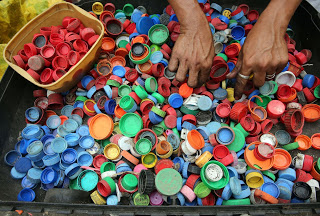 Imagine throwing your empty plastic water bottle into a household composting bin that breaks down the plastic and produces biogas to help power your home. Now, researchers have taken an early step toward this futuristic scenario by showing that certain blends of bioplastics can decompose under diverse conditions. They report their results in the ACS journal Environmental Science & Technology.
Imagine throwing your empty plastic water bottle into a household composting bin that breaks down the plastic and produces biogas to help power your home. Now, researchers have taken an early step toward this futuristic scenario by showing that certain blends of bioplastics can decompose under diverse conditions. They report their results in the ACS journal Environmental Science & Technology.———————————————–
11. Group to Sue Trump Administration for Failing to Address Ocean Acidification
PORTLAND, Ore. — The Trump administration is facing a new lawsuit. The Center for Biological Diversity says the White House isn’t doing enough to protect Oregon’s waterways. The center on Monday filed a notice of intent to sue the administration. At issue is the acidification of the ocean from fossil fuel pollution. An acidic ocean can negatively impact marine life, such as oysters. Plaintiffs say the administration hasn’t identified or protected “impaired waterways” as required by federal law. According to the group, Oregon’s coastal waters have already reached levels of acidity scientists thought they wouldn’t hit until the end of the 21st century.
———————————————–
12. Algae Bloom in Lake Superior Raises Worries on Climate Change and Tourism
In 19 years of piloting his boat around Lake Superior, Jody Estain had never observed the water change as it has this summer. The lake has been unusually balmy and cloudy, with thick mats of algae blanketing the shoreline. “I have never seen it that warm,” said Mr. Estain, a former Coast Guard member who guides fishing, cave and kayak tours year-round. “Everybody was talking about it.”
Editors Note: Freshwater systems are of considerable concern to Sea Save Foundation because the directly affect downstream marine systems.
———————————————–
13. Scientists in Fiji Examine How Forest Conservation Helps Coral Reefs
Researchers from the University of Hawai’i at Mānoa (UH Mānoa), WCS (Wildlife Conservation Society), and other groups are discovering how forest conservation in Fiji can minimize the impact of human activities on coral reefs and their fish populations. Specifically, authors of a newly published study in the journal Scientific Reports have used innovative modeling tools to identify specific locations on the land where conservation actions would yield the highest benefits for downstream reefs in terms of mitigating harm to coral communities and associated reef fish populations. The study is titled “Scenario Planning with Linked Land-Sea Models Inform Where Forest Conservation Actions Will Promote Coral Reef Resilience.”
———————————————–
14. Changes Coming to Maryland Shark Fishing Regulations
The Maryland Department of Natural Resources is considering some changes to state recreational shark fishing regulations. Included will be a regulation prohibiting anglers from removing “Catch and Release” sharks from the water.
Another change will be that anglers will be required to use non-offset, non-stainless steel, circle hooks. Studies show that the use of circle hooks greatly decreases the chances of a shark being hooked anywhere but in the jaw ensuring that fewer sharks will die from internal injuries caused from being hooked in the gut.
———————————————–
15. New Large Shark Species Heading for the UK.
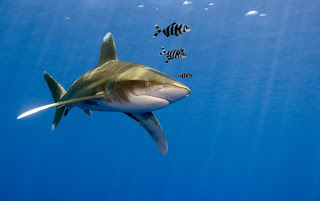 The climate is changing – and so are our seas. Warming sea temperatures have resulted in British cod moving north, benefiting Iceland. The English Channel has warmed during the last half century and the grey Atlantic triggerfish is now a year-round, rather than just a summer, resident in the waters off Cornwall and Dorset. Along the south coast of England, there has also been an eastward shift in the distribution of “warm” Atlantic barnacles, which are now displacing the “cold” North Sea species. But bigger fish, including sharks, are changing their range, too. An excellent recent paper revealed how temperature changes the occurrence and activity of roaming apex predators.
The climate is changing – and so are our seas. Warming sea temperatures have resulted in British cod moving north, benefiting Iceland. The English Channel has warmed during the last half century and the grey Atlantic triggerfish is now a year-round, rather than just a summer, resident in the waters off Cornwall and Dorset. Along the south coast of England, there has also been an eastward shift in the distribution of “warm” Atlantic barnacles, which are now displacing the “cold” North Sea species. But bigger fish, including sharks, are changing their range, too. An excellent recent paper revealed how temperature changes the occurrence and activity of roaming apex predators. ———————————————–
Be sure to “LIKE” http://facebook.com/SeaSave to ensure our “Week in Review” is delivered to your newsfeed every Friday.
Sea Save Foundation is committed to raising awareness of marine conservation. The Week in Review is a team effort produced by the Sea Save staff to provide a weekly summary of the latest in marine research, policy, and news.

